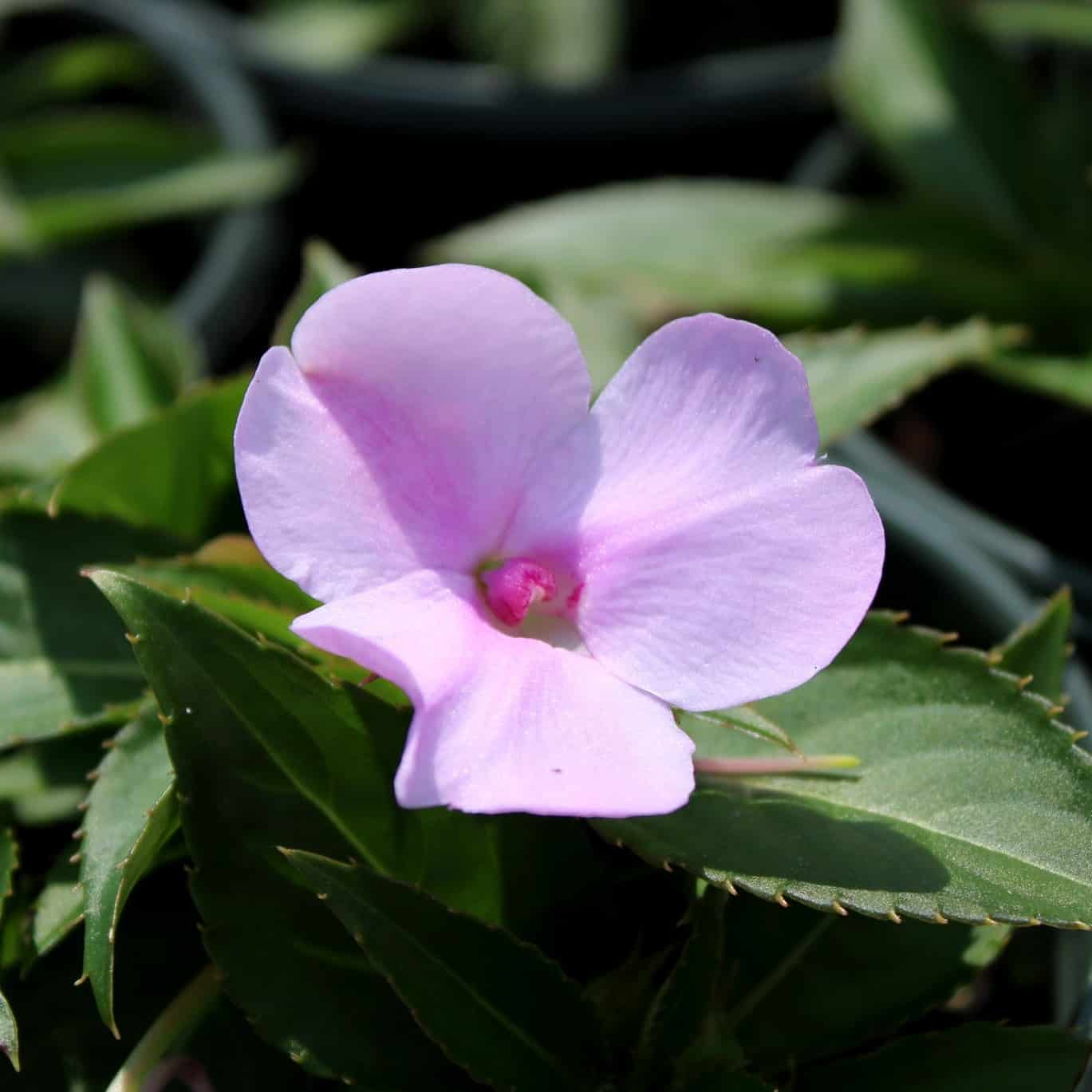Gardens in Florida have Sunpatiens coming year after year, while Arizona and Ohio have it only before the frost. Well, this might make you wonder if the Sunpatiens are annuals or perennials.
Despite the ongoing debate on whether the Sunpatiens are annuals or perennials, they require a few tips and tricks to prolong growth and blooming.
Table of Contents Show
What is Sunpatiens?
Developed in 2006, Sunpatiens is a flowering hybrid created by crossing two varieties of Impatiens (Impatiens × hybrida SunPatiens).
The major difference between the hybrid Sunpatiens and its parent Impatiens is the ability to soak in the sun.
Under optimum light and temperature between 65°F and 75°F, this vigorous hybrid can reach 12-36 inches tall and 12-24 inches wide.
Also, regularly watering Impatiens every alternate day helps produce ruffled flowers in shades like red, pink, orange, white, and purple.

The larger flower diameter of 2 to 3 inches makes the plant stand out among Sunpatiens vs. the other hybrid, New Guinea Impatiens, with a smaller flower of only about 1.5 inches.
While not much of a voracious feeder, adding slow-release fertilizers during the growing seasons help the plant produce better blooms and seeds.
Are Sunpatiens Flower Annuals or Perennials?
Botanically, Sunpatiens are perennial, but you’ll barely see them growing as one.
These heat-loving plants are extremely sensitive to frosts and naturally lose the blooms and the entire plant below 32°F.
However, in zones 10 and 11, winter is less likely to go below freezing point and bearable for the Sunpatiens.
Here the plant comes back the following season and exhibits short-lived perennial characteristics.
Even in these regions, the Sunpatiens does not go dormant but slows its growth.
The semi-dormant stage with decreased flowering picks its pace once the spring is on.
How To Care For Sunpatiens In The Winter?
Exposing the Sunpatiens to frost and freezing temperatures cause root damage. The consequences can sometimes elevate to killing the plants.
However, if you want to try overwintering the plant in a region with mild winter, here are some care tips.
- Bring the plants indoors and place Sunpatiens in a spot with 4 to 6 hours of bright direct sunlight. Make sure to overwinter the plant before the first frost.
- If your plant is in a garden bed, carefully dig it up, transplant it in a terracotta pot, and move them indoors.
- To prevent temperature fluctuation, avoid placing the plant near drafty windows, coolers, or heat vents.
- Reduce the watering frequency to once every week during the winter to avoid overwatering, as the Sunpatiens is not actively growing. You may also opt for bottom watering to prevent both under and over-watering.
- Turn on a humidifier to balance the dry indoor air, as Sunpatiens loves high humidity. Alternatively, you can group Sunpatiens with other house plants to create a mini biome.
- Avoid adding fertilizers to your plant to protect the chemical root burns as the plant’s growth slows down during the cold months.
- Watch out for pests like aphids and spider mites. If there are any, use neem oil to control the pest attack. In case pests do not subside, trim the infested parts to halt their spread.
As the Sunpatiens survive the winter, you can transplant them back into the ground or garden in the warm spring by gradually acclimatizing them to outdoor conditions.
From Editorial Team
Prune Before Overwintering!
Before overwintering, prune the Sunpatiens to help reduce stress during the dormant phase.
Removing excess foliage and branches directs the plant’s energy toward maintaining the roots and remaining foliage.
